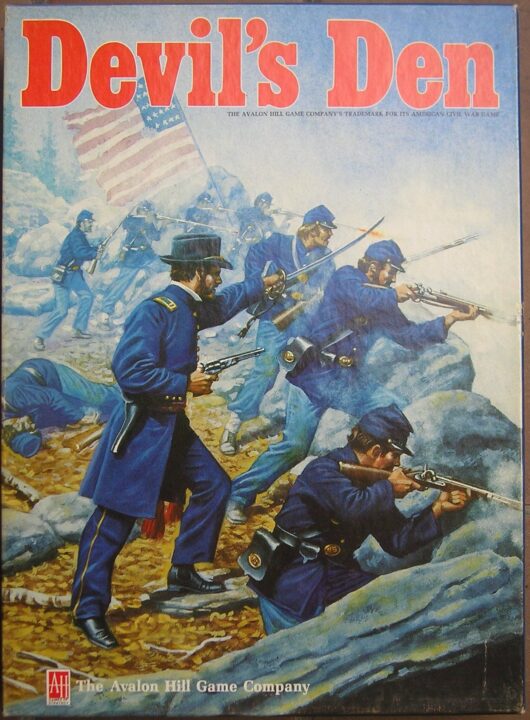Ever had a game night where you wondered if your best friend is plotting against you, or just bad at making alliances? Welcome to my review of Devil’s Den! I’ve played this one with my group, and wow, it’s wild. Players go from plotting and scheming to backstabbing in the blink of an eye. If you love games that spark loud laughter and even louder debates about who is more evil, you’ll want to hear what I think of this one.
How It Plays
Setting up
To start, grab the game board and set it in the center. Everyone picks a colored devil pawn. Shuffle the deck of den cards and deal three to each player. Place the soul tokens and fire gems within reach. Watch everyone act like they know the rules already—classic.
Gameplay
On your turn, you draw a den card, then move your devil pawn. You can collect soul tokens, block paths, or steal from others if you land on their spot. If you like making enemies fast, I recommend a good early theft. The cards let you bend the rules, pop up walls, or set traps. Halfway through, someone will try a sneaky shortcut, which usually backfires. That’s half the fun!
Winning the game
The first player to collect five soul tokens and escape to their den wins. If two players sprint for the finish, expect some wild blocking and lots of trash talk. No need for a tiebreaker—someone always gets greedy and falls for a trap in the last lap.
Want to know more? Read our extensive strategy guide for Devil’s Den.
Gameplay Mechanics and Player Interaction in Devil’s Den
Let’s get this out of the way—Devil’s Den does not want you to relax. From the first move, it’s clear the game wants you to sweat over every choice. The core mechanics turn simple things like moving your minions into moments of pure strategy agony. Each player commands a tiny legion of demons and cultists, and you all battle for control of the hellish board. Sound friendly? It’s not. My mate Dan literally shouted, “I HATE YOU!” at me after I blocked his route to the only power crystal left. Good times.
What really makes Devil’s Den fun is how much you mess with your friends. It isn’t just about building up your own forces; it’s about stopping everyone else. There are traps, special powers, and even bribery cards. One time, I convinced two others to team up against Paul, who was clearly winning, only for Dan to betray me at the last second. Still salty, but that’s gaming life.
The mechanics keep things moving, though. You don’t just roll dice and hope for the best. You can out-think, out-bluff, and out-scheme. There’s a lot of player interaction, too. You have to watch everyone and figure out who’s plotting, and who’s just pretending to plot. It’s like every Friday night at my house, but with more flames and less pizza.
Next up, I’ll talk about whether Devil’s Den is fair, or if it secretly sold its soul to luck—so keep your pitchfork handy!
Is Devil’s Den a Fair Fight? A Look at Balance and Justice
Alright, let’s talk turkey. Or, in this case, let’s talk about game balance in Devil’s Den. We’ve all had those nights where one person runs away with a victory just because of a lucky dice roll (looking at you, Monopoly). Thankfully, Devil’s Den doesn’t let that happen. It’s a strategy game where your choices matter more than your lucky underwear.
When I played with my usual group—two overthinkers, one risk-taker, and me (the snack guy)—I noticed something cool. No matter your playstyle, Devil’s Den keeps things tight. No one has an unfair advantage, and you can change tactics if you fall behind. I loved how clever plays could flip the script, and nobody felt hopeless, even when things looked grim.
But it’s not all rainbows and perfectly balanced scales. The first player gets a tiny edge, especially in tight two-player matches. It’s not game-breaking, but we noticed that the starting player nabbed the best position more than once. Also, if one player gangs up with another, you might get roasted like a marshmallow. But hey, that’s what alliances in gaming are all about—fun until your friend betrays you.
Overall, Devil’s Den hits a sweet spot between fair competition and the chance for sneaky, brilliant moves. It’s not flawless, but it never feels unfair or random. I’d give it a strong 4 out of 5 for balance—better than most, with only a sprinkle of salt.
Next, I’m going from game balance to the stuff you can actually touch—yep, I’m talking about component quality and artwork, and trust me, my grubby fingers have opinions.
Component Quality and Artwork: Devil’s Den Unboxed
Let’s get one thing clear. If Devil’s Den were a pizza, it’d be thick crust. The box alone could stun a rhino. When I first picked it up, I wondered if I was signing up for a strategy game or secret arm day. Inside, though, the devilish goodness shines. The player tokens? Heavy and smooth, not like those cheap plastic chips that crack if you sneeze. Every time one clacked on the board, my friend Steve flinched. Not because he was scared, but because the sound is so satisfying!
The board is a work of art. It’s not just a backdrop; it sets the mood. The deep reds, smoky blacks, and twisted paths look like the devil’s own GPS. The font is a bit wild—almost like someone tried to summon a demon from a typewriter. But surprisingly, it’s still easy to read, even when you’re squinting through the sweat of late-game tension. Cards are thick enough to handle shuffling by the gentlest hands or the wild beasts who riffle shuffle like it’s the World Series of Poker.
Miniatures make an appearance, too. They’re chunky with fun details. My group spent ten minutes naming them instead of actually playing. One looked like it just lost its pitchfork in a poker game. If I had to pick, the only letdown is the insert—the inside is a bit of a hot mess and does your organizing no favors. So, prepare yourself for some baggies or, if you’re like me, utter chaos until someone else sorts it.
Next up, I’ll let you know if Devil’s Den is one-night-stand material or a long-term fling—replay value and game length are on the table!
Devil’s Den Replay Value and Game Length: Will You Want to Play Again?
I’ve played Devil’s Den about a dozen times now. That means I either really enjoy the game, or my friends and I are just gluttons for punishment. Either way, the replay value here surprised me in a good way. The variety of strategies you can try, combined with how each group of players approaches the game, means it rarely feels the same twice. I saw sneaky wins, bold plays, and one session where someone tried to turn the table (and not in a good way!).
Devil’s Den does take a while to play. The box says 60-90 minutes. In my experience, it’s rarely under 90, unless everyone speed-reads rules and ignores their phones. If you play with the maximum number of players, block off a good two hours, especially if you like to argue about optimal moves (guilty!). The game doesn’t drag, though—the tension holds up throughout, and I’ve never felt bored waiting for my turn.
What saves Devil’s Den from overstaying its welcome is that every move matters. You don’t have players checking out halfway through. Everyone is invested, probably because they sense betrayal is lurking, or they’re plotting their own chaos. That makes for a high-energy game night, but maybe not one if you’re short on time.
So, do I recommend Devil’s Den? Absolutely, if you like meaty, replayable games and don’t mind games running a touch long. Just make sure you bring snacks and your A-game. You’ll need both.
Conclusion
If you want a brain-burning strategy game with lots of chances to outsmart your friends, then Devil’s Den belongs on your shelf. The game rewards thinking ahead and never feels cheap or random, but it can go long if you’ve got slowpokes at the table. Pieces look great, setup is smooth, and the artwork is as moody as my cousin at Thanksgiving. I’d call it a winner for groups who like to plot, scheme, and occasionally yell at each other (in a fun way, not in a therapy-needed way). This wraps up my review of Devil’s Den. Go unleash your inner devil — or at least, your inner sneaky board gamer!


